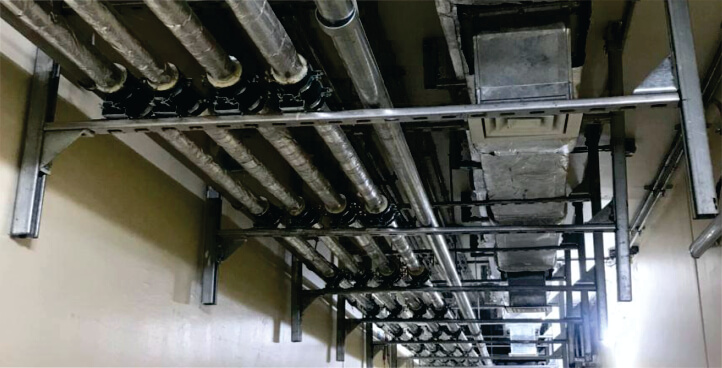
Tube clamp:
This type of metal clamp and supports is designed and manufactured to keep pipes secure in construction and industrial plumbing. This type of fastener has different types, which are:
Lightweight clamp (with nut and yoke)
These clamps are designed to support various types of polymer pipes such as: polyethylene pipes, PVC pipes and polypropylene pipes and are mainly used in the sewerage sector and hot and cold water transfer in the construction industry.
Heavy clamp:
These clamps are mostly used to support all types of steel pipes used in power plants and refineries.
Clive fastener and sprinkler fastener
These clamps are designed for water transmission systems related to fire and firefighting systems and in accordance with the requirements of the NFPA standard.
Riser Clamp:
These clamps can be used as clamps and guides for vertical pipes (risers).
U strap Clamp:
These clamps can be used for pipes (vertical / horizontal) passing through walls and ceilings and are also used for direct connection of pipes on perforated profiles.
Fixed support:
It is one of the most widely used piping supports and it is better known as the shoe of the mentioned support. In addition to withstanding the force of weight, it has other functions. If the base of this support is connected to the installation site with screws, it will act like Anchor support.
Some uses of this support:
- Insulated lines: Insulated lines, if placed directly on the structure (such as pipe racks, perforated profiles, etc.), the insulation of these lines will fail and cause heat exchange between the fluid and the environment.
- Galvanized lines: In traditional operations, if the pipe material is stainless steel, it will not be possible to weld the pipeline to supports that are mainly made of carbon steel due to the incompatibility of this material. In such cases, the use of restraint packages is very cost-effective.
Sliding support:
This support is actually a combination of rigid support (Guide) and a weight support (shoe). The main task of this support, in addition to bearing the force of gravity and preventing lateral displacement (caused by factors such as wind and earthquake), is to provide the possibility of longitudinal displacement of pipelines. These longitudinal displacements are caused by temperature changes in the pipeline that cause expansion and contraction.

